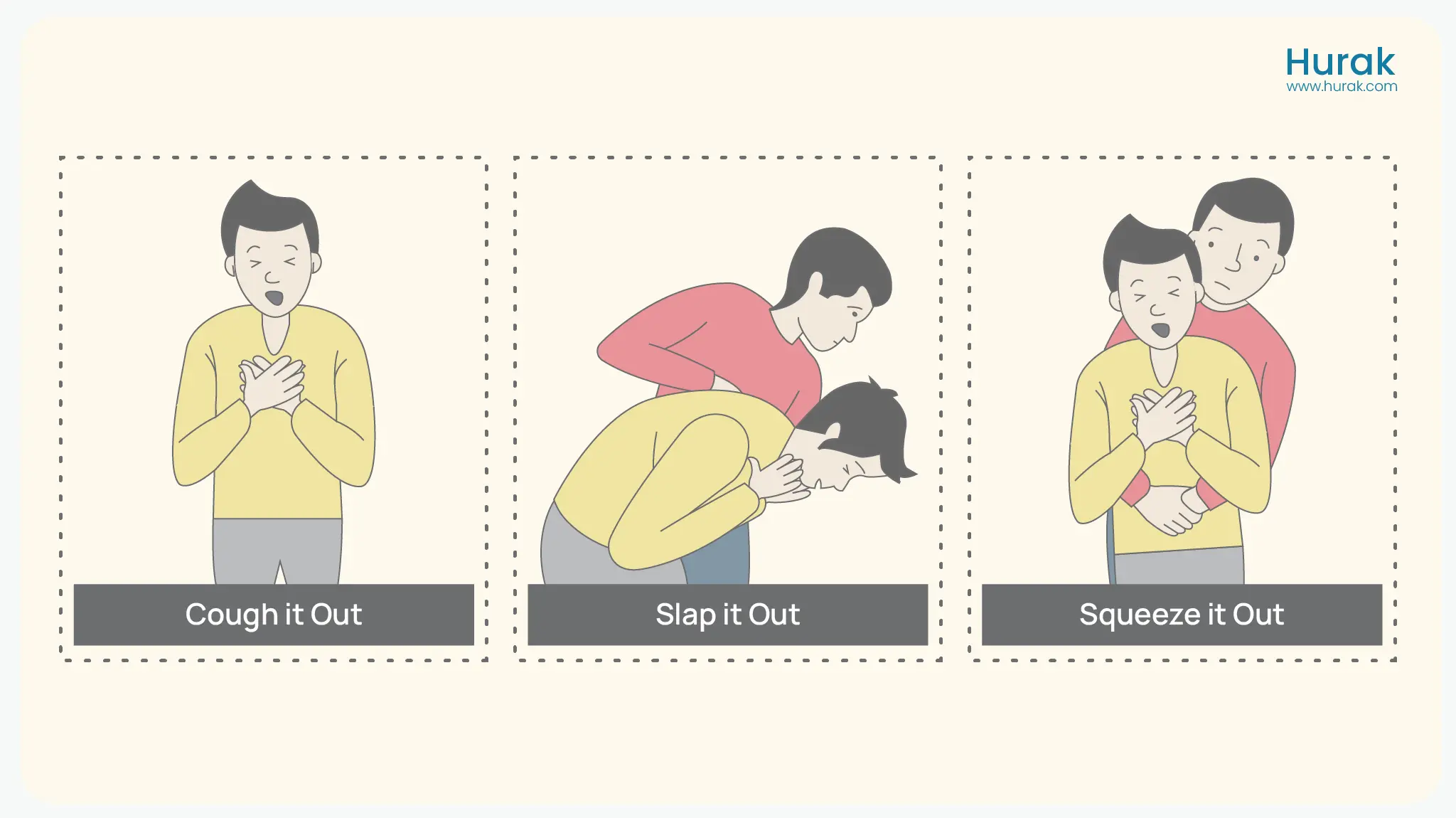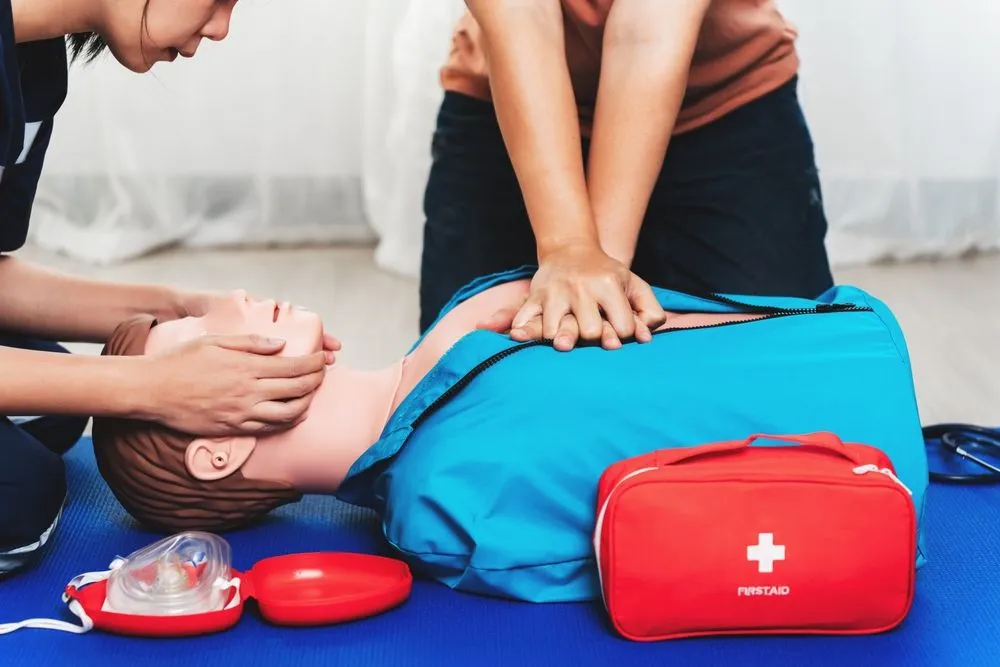Understanding Choking
Food Choking: The Adult Nemesis
Have you ever experienced the panic of someone choking? I have, and let me tell you, it is not something you would want to confront without adequate preparation. I am referring to both Food choking in adults and babies choking – either way you need to be prepared with adequate knowledge that covers how to perform first aid when such a scenario arises – Acting fast and efficiently when someone is choking can save a life. Let us dive deeper into understanding choking. The treatment and 1st aid for choking.
Infant Choking: A Parent’s Nightmare
What to Look For: How to Recognize Choking
We will discuss choking treatment later, but let’s cover the signs first.
- The hands-on-the-throat universal sign of choking
- Seems unable to talk, cough or breathe correctly
- Eyes are panic-stricken
- Deep wheezing, or abnormal retraction- gasp sounds
- Parts of the body turning violet or ashen blue throughout the body
- Loss of consciousness (this is the most extreme case)
Choking Management: First Aid Guide with Diagrams
For Adults and Children Over 1 Year

- Encouraging coughing – for some people that is enough.
- If coughing fails, it’s two-hand back slap time. Deliver five upward fist-strikes between the shoulder blades.
- Still stuck? Abdominal thrusts, also known as the Heimlich method, is the next step.
- While standing behind them.
- While putting your arms around their waist.
- You make a fist just above their belly button.
- While seizing your fist with your other hand.
- In a rapid velocity, deliver quick paroxysms stroke in an upward direction.
4.Repeat the previous steps by alternating back blows with abdominal thrusts until the object becomes dislodged.
Infant Choking: How to Help an Infant Choking
What should you do if an infant is choking? This is a question that comes up quite a lot, take note of the following and remain composed throughout the task
What to Do if an Infant Chokes
- Place the baby on their stomach along your forearm.
- Do five back blows that are both soft and hard.
- If that doesn’t work turn them around and give them 5 booty bumps.
- Keep alternating between back blows and booty bumps until you can remove the obstruction
Bearing in mind that there is no such thing as abdominal thrust for babies.

When to call for help and How to Do It
999 can be dialed without hesitation in the event that:
- You were choking yourself and were all by yourself in the room
- The person passes out.
- If you can’t seem to help the person due to severe airway obstruction .
Choking Treatment: Beyond the Emergency
Knowing the 1st aid for choking is important but now let’s discuss prevention methods:
- Cut food into small pieces especially for kids and elderly
- Chew food well and for your throat to be at rest. Let your mouth do the work
- Infants and Toddlers should not be allowed to play with small objects
- Infants and young children should be supervised while eating at all times

Be Ready to Help in Choking Emergencies!
Choking can happen in an instant. Are you prepared? Discover essential first aid steps to take if someone is choking. Get certified now by enrolling in our Emergency First Aid course and learn how to potentially save a life.
FAQS
What are the 5 steps if someone is choking?
Cough it out
Slap it out
Squeeze it out
Check their mouth
Call the emergency helpline (999)
What is the first aid practice for choking?
If a person is choking and having difficulty talking or crying or laughing forcefully your immediate response should be to give them five blows and five swift abdominal thrusts.
What not to do when someone is choking?
It is crucial that you remember never to pat an infant on the back if they are able to cough, in such situation slapping them on the back may dislodge the object and might be inhaled deeper in the airways
Wrapping It Up: Be Prepared, Save Lives
Few points to remember – this is your ultimate preparedness guide in terms of choking first aid, whether it be adult food choking or infant choking and the appropriate response. Exceptional as that may sound, I assure you that this information will remain with you.
Please keep in mind the following because in the event that there is no time to call for help and the person is in danger of choking it is you who will be the first patient’s helper. As a first responder you should be familiar with the importance and benefits of first aid. Relax and do something about it. Listen to your body as it will tell you that you can go back to doing what you do best!
In this regard, I would like to ask a brave question – have any of you been in practice and had to use these skills? Or using a bit of food choking yourself how close dilation did you get? Please do share your experience in the comments. We can teach each other and raise awareness on this important life-saving technique.
Take care of yourself and may all of your meals go down with ease.




